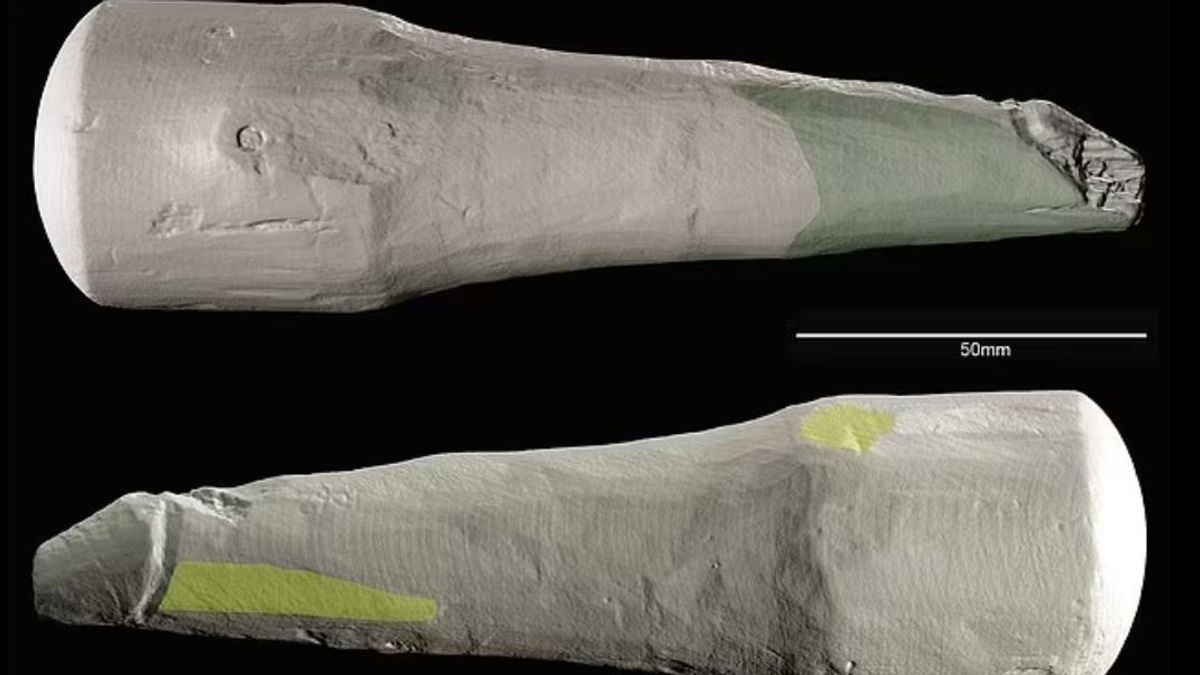JAKARTA - Sex toys are usually thought of as modern, but a new study suggests they may have existed long before we thought.
Researchers have found strange wooden artifacts in the Roman fort of Vindolanda that they believe may have been used during sexual intercourse.
The object was found along with dozens of shoes and clothing accessories, which initially led people to think it was a tool for sewing. However, a new analysis suggests that the object about the same size as a human penis - at 6.3 inches long - was actually being used as a sexual aid.
Dr. Rob Collins, one of the study's authors, told MailOnline: "If the object is a sex toy, we believe this could be Britain's oldest known model."
The wooden object was discovered in 1992 at Vindolanda - a Roman fort south of Hadrian's Wall in northern England, where Roman soldiers guarded the road from the River Tyne to the Solway Firth. It was found along with a number of other artifacts, including shoes, clothing accessories, small tools, and craft waste, such as bits of treated leather and horn.
This led the inventors to think that the object was a tool for sewing. However, in their new study, experts at the University of Newcastle and University College Dublin questioned whether this was true, given the phallic nature of the object.
Phalli or phallus was widely used throughout the Roman Empire as a way to protect against bad luck.
Small phalli carved from bone or fashioned from metal were usually worn as pendants, while houses were often decorated with frescoes or mosaics featuring the phalli.
However, given its realistic size, researchers think the wooden object may have been used for more than just preventing bad luck.
Their analysis revealed that both ends of the object felt smoother, suggesting "repeated contact over time".
"The size of the phallus and the fact that it's carved out of wood raises a number of questions about its use," says Dr. Collins. "We cannot be sure of their intended use, in contrast to most other phallic objects which use the shape symbolically for a clearly defined function, such as a good luck charm."
While the team's leading theory is that the object was used as a sex toy, they say there may be other possibilities. It may have been used as a pestle for grinding cosmetic or medicinal ingredients, the researchers said.
Alternatively, it may have been inserted into a statue that people would touch for good luck – something common throughout the Roman Empire.
VOIR éGALEMENT:
However, the team highlighted that they have found no evidence of such statues in Roman fortifications, either indoors or outdoors.
Dr. Rob Sands, an author of the study, said: 'Wooden objects would have been commonplace in the ancient world, but only survived under very special conditions - in northern Europe usually in dark, moist and oxygen-free deposits.
"So, the Vindolanda phallus is a very rare survival," said Sand as quoted by the Daily Mail.
Researchers believe it is possible that some wooden phallus was used at Vindolanda.
Barbara Birley, Curator at the Vindolanda Trust, said: 'The current wooden phallus may be unique in its survival since that time, but it is unlikely to be the only one of its kind used on the site, along the border, or indeed in Roman Britain.'
The phallus will now be on display at the Vindolanda Museum in Northumberland.
The English, Chinese, Japanese, Arabic, and French versions are automatically generated by the AI. So there may still be inaccuracies in translating, please always see Indonesian as our main language. (system supported by DigitalSiber.id)













